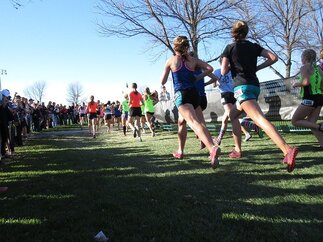 Training for races takes a big commitment and finding places to train properly can be a major challenge if you live in the city. There is no substitute for doing real preparation before race day, so sometimes you have to get creative about where or how to train. In this post, blog contributor Eric Kelly of mydadventures.com shares a few tips. Find alternative spots for training
Training for a race while living in the city can be daunting. Navigating busy paths or traffic can ruin a good run, but there are ways to train without straying too far from home. Of course, one option is to join a gym that has treadmills and a running track. Gym memberships can be expensive, so look for ways to save. Many employers offer free or discounted gym programs. Most gyms offer discounts for college students with an ID. Many older runners can join free, thanks to the Silver Sneakers program, available through their Medicare supplement plan. If going to the gym isn’t your cup of tea, dig a little bit to find some trails or parks nearby that provide a great setting for getting in your training miles. Look for running clubs or fellow runners to connect with and you may get the inside scoop on the best spots to run and up your game a bit with some friendly competition. Running trails like the Rachel Carson Trail and the Boyce Mayview Perimeter Loop are a couple of Pittsburgh favorites. Incorporate training to account for route terrain Few races have a route that is entirely straight and flat, so it’s important to incorporate some variety into your training runs in preparation. Almost all race routes will have hills, so it may take some strategizing to prepare for these. For example, you can run stairs to build your endurance and prepare for that hilly race terrain. Outside Online suggests getting creative to prepare for racing routes that are mountainous, winding, or along pathways with loose gravel or packed dirt. You may try running on sand, cobblestone streets, or grass to get used to different terrains and utilize the incline function on the treadmill for more hill training. Are you ready to go bigger and bolder? Many runners get anxious to try bigger races. Once you have a few local 5K or 10K races under your belt, you may start eyeing a half marathon, marathon, or triathlon. Runner's World suggests that you should be comfortably running 20 to 23 miles a week, typically three to four days a week, before you tackle longer races. Preparation is essential when doing marathons, triathlons, and other similar races. Don't set yourself up for failure by biting off more than you can chew. Triathlete details that it’s important to respect your current level of fitness. Try to pick a longer race that will challenge you, but that won't be so big that you're destined for failure or disappointment. Consider traveling for longer races Runners may look first to local races as they step up their distance or level of challenge. However, in some communities, there may not be marathons or triathlons scheduled very often. A bit of homework and travel can lead to an exciting run away from home and there are many options available. Keep in mind that many popular, large races fill up quickly. If you are looking to tackle a well-known marathon, register as early as possible. You will also want to consider the amount and expense of travel if you're headed out of town to run, as well as the weather, terrain, and size of the race to ensure that it's a fit for you. Running can be challenging when living in a bustling city. Running clubs are valuable resources for finding spots to run and you can also run stairs or jump on the treadmill for additional race training. Many people are eager to try longer races after a few short ones (and proper training!), and traveling is a great way to find invigorating options. Set your sights on a reasonable goal and embrace what can be the experience of a lifetime as you hit the pavement. [Image by Pixabay]
0 Comments
Leave a Reply. |
Click to set custom HTML
AuthorKen Presutti is a certified ChiRunning instructor, ACE Personal trainer, Spinning instructor, and coach. This blog is a mix of new articles and posts from his original blog, Overkill is Underrated. Archives
November 2022
Categories
All
|

 RSS Feed
RSS Feed
